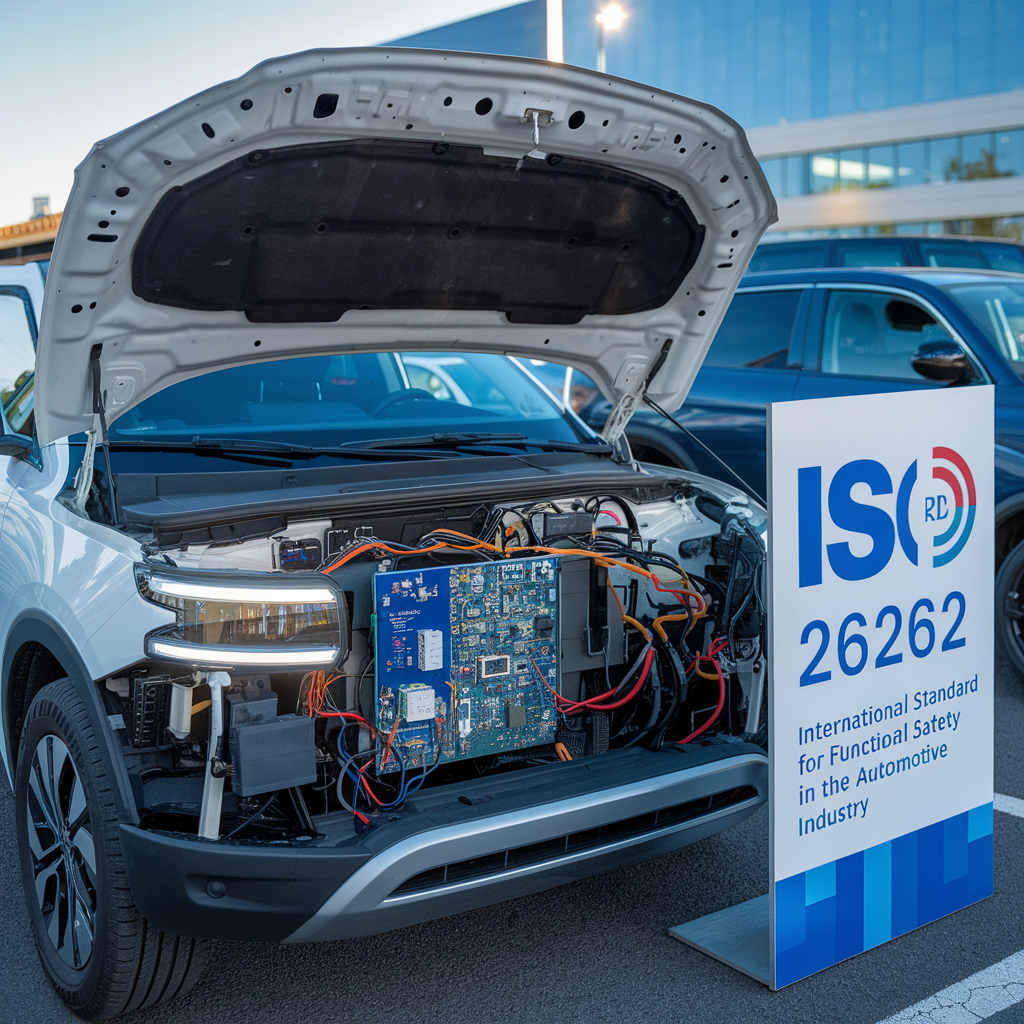
AI transforms fleet maintenance from reactive to predictive, using real-time sensor data to forecast failures, reducing downtime by 40% and cutting costs while extending vehicle lifespans.

Drivetech Partners
Transportation fleets are undergoing a radical transformation as artificial intelligence and machine learning integrate with telematics systems, shifting from reactive maintenance to data-driven predictive strategies. By analyzing real-time sensor data from engines, tires, and other critical components, AI algorithms can now predict failures before they happen, dramatically reducing downtime and operating costs while extending vehicle lifespans.
Key Takeaways
Predictive maintenance powered by AI can reduce unplanned breakdowns by up to 40% and save 20% on maintenance costs
Advanced telematics systems collect thousands of data points per second with 98-99% accuracy in detecting potential failures
AI-driven fleet safety features have led to a 40% reduction in collision rates according to Geotab research
Intelligent route optimization can cut fuel consumption and emissions by up to 15%
One company reported an 88% decrease in incidents and 78% reduction in damage costs after implementing AI telematics
The Future of Fleet Maintenance: From Reactive to Predictive Strategies
The days of waiting for vehicles to break down before performing maintenance are rapidly becoming obsolete. AI-driven telematics systems now enable fleet managers to anticipate problems and address them proactively, fundamentally changing how maintenance is scheduled and performed.
Traditional maintenance approaches follow fixed schedules or respond to failures, often leading to unnecessary servicing or costly breakdowns. Modern AI and machine learning algorithms continuously analyze real-time sensor data including engine diagnostics, tire pressure, fuel consumption, and historical performance records to identify patterns that predict component failures before they occur.
This predictive approach allows maintenance to be scheduled precisely when needed – not too early (wasting resources) and not too late (causing breakdowns). Key vehicle components constantly monitored include:
Engine performance metrics
Transmission systems
Brake wear patterns
Battery health indicators
Fluid levels and quality
Real-Time Data Collection and Analytics: The Engine Behind Predictive Maintenance

At the heart of predictive maintenance lies an advanced sensor network that collects thousands of data points per second from vehicles. These sensors create comprehensive operational profiles that provide unprecedented insights into vehicle health and performance.
Edge computing technology enables immediate processing of critical data, with alerts sent instantly when anomalies are detected. This real-time capability allows fleet managers to address potential issues before they escalate into serious problems.
The power of AI algorithms in this context cannot be overstated. They identify subtle patterns in vehicle performance data that human analysis would miss, detecting early warning signs of potential failures. The technology ecosystem making this possible includes:
IoT sensors throughout the vehicle
Machine learning algorithms analyzing operational patterns
Edge computing capabilities for real-time processing
Cloud-based analytics platforms for deeper insights
Precision is critical in this field, with the best algorithms reaching 98–99% accuracy in detecting key events. This level of reliability creates trust and delivers measurable ROI for fleet operators.
Operational Efficiency and Automated Decision-Making
AI-powered telematics systems don't just predict failures—they can automate entire maintenance workflows. These systems can automatically schedule repairs, order parts, and adjust driver routes with minimal human intervention, creating unprecedented operational efficiency.
Fleet managers can now benchmark vehicle performance against industry standards and prioritize maintenance activities for maximum ROI. The improved diagnostics accuracy also reduces unnecessary parts replacement and maintenance costs.
Leading platforms in the industry provide comprehensive dashboard views for maintenance planning and operational insights:
Samsara: Offers integrated fleet management with predictive maintenance
Motive: Provides real-time alerts that are 3-4x more effective than competitors
Geotab: Delivers comprehensive analytics with powerful safety features
Fleet Complete: Focuses on complete asset lifecycle management
Motive's platform stands out with real-time alerts that are 3-4x more effective compared to competitors, achieving accuracy up to 99% in detecting key risk behaviors that could lead to maintenance issues or safety concerns.
Driver Safety and Performance Optimization
AI-driven telematics doesn't just monitor vehicles—it monitors driver behavior patterns and provides automated feedback to improve safety compliance. These systems detect and alert for risky behaviors like harsh braking, speeding, distraction, and drowsiness in real-time.
The ability to customize training programs based on individual driver data improves long-term safety culture and performance. The impact is substantial—Geotab reported a 40% reduction in collision rates for fleets using AI-powered safety features, translating to thousands fewer incidents annually.
Human error, the leading cause in most road incidents, is effectively mitigated through immediate feedback and intervention. This creates a virtuous cycle where drivers improve their skills while vehicles receive less stress and damage, further extending maintenance intervals.
Sustainability and Environmental Impact
The environmental benefits of AI-powered telematics are significant. AI route optimization tools minimize miles driven, cutting fuel consumption and emissions by up to 15% according to case studies.
Balanced vehicle utilization ensures no vehicle is over- or under-used, extending asset life and supporting circular economy principles. Automated maintenance ensures vehicles perform at optimal efficiency, preventing unnecessary emissions from poorly maintained vehicles.
Environmental compliance becomes easier to maintain with real-time monitoring of vehicle emissions and performance metrics. Key sustainability metrics tracked by modern telematics systems include:
Fuel efficiency across routes and drivers
Emissions output monitoring
Idle time reduction opportunities
Optimal route planning for minimal environmental impact
Financial Benefits and ROI

The financial case for AI-powered telematics is compelling. Reduced maintenance costs through prevention of catastrophic failures and more efficient repair scheduling deliver immediate savings.
Lower insurance premiums and liability costs represent another significant benefit. One company reported an 88% fall in incidents and 78% reduction in damage costs after implementing a comprehensive telematics solution.
Extended vehicle lifespans through optimized maintenance schedules and improved operational efficiency maximize return on capital investment. Better budget forecasting through predictive analytics for maintenance needs and operational expenses helps financial planning.
Perhaps most importantly, reduced downtime means more vehicles are available for revenue-generating activities at any given time, directly impacting the bottom line.
Implementation Challenges and Adoption Strategies
Despite the clear benefits, implementing AI-powered telematics isn't without challenges. Workforce training and change management are critical, especially with persistent technician shortages in the transportation industry.
Data integration across legacy systems requires thoughtful planning and technical expertise. Privacy concerns and data security must be addressed through comprehensive cybersecurity protocols to protect sensitive operational data.
A phased implementation approach allows for validation of ROI and adjustment of systems before full-scale deployment. This measured approach helps organizations adapt to new technologies while maintaining operational continuity.
Increasing regulation and global company sustainability mandates are driving more fleets toward AI-powered telematics solutions, creating both pressure and opportunity for transportation companies.
Future Trends: What's Next for AI in Fleet Management
The evolution of AI in fleet management is accelerating. Advanced prognostics will enable maintenance planning months in advance rather than days or weeks, further reducing costs and improving planning.
Digital twins of vehicles will allow for simulation-based optimization of maintenance schedules. This virtual modeling capability will let fleet managers test different maintenance strategies without risking actual vehicles.
Integration with autonomous vehicle technologies will create self-diagnosing and self-reporting maintenance needs. As vehicles become more autonomous, they'll also become more self-sufficient in monitoring their own condition.
Predictive battery management for electric fleet vehicles will optimize charging schedules and extend battery life, addressing one of the key challenges in fleet electrification.
Industry consolidation is expected as smaller telematics providers are acquired by larger technology companies, potentially bringing more integrated AI solutions to market.
Sources
Torque by Ryder - Fleet Maintenance Trends to Watch in 2025
FleetPoint - The Critical Role of AI in Telematics and Driver Safety
RTA Fleet - What is Fleet Management for 2025
TrackStar - The Environmental Benefits of Implementing Telematics
Volpis - AI and ML in Fleet Management
Geotab - AI Fleet Safety State Local Government
GoMotive - AI Fleet Management Trends 2025
Zurich - Telematics: How to Protect Employees and Keep Insurance Sustainable
Llumin - Fleet Tracking 2025: Reduce Breakdowns by 60%
AT&T Business - The Impact of AI-Powered Fleet Management on Driver Safety





